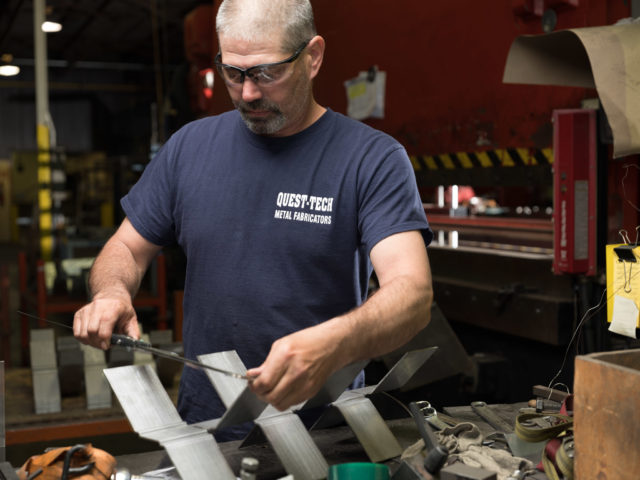Metal forming is a fabrication process that creates structural parts and components out of metal sheets or tubing. A basic metal forming process will bend or deform a metal workpiece to a desired geometric shape. In many ways, metal forming is not only the foundation of modern industrial manufacturing but a vital industry of and in itself. Metal forming processes utilize hundreds of millions of tons of material annually that contributes an estimated 15%-20% of the GDP of industrialized nations.
The production process can mass produce parts used in applications for such industrial sectors as aerospace, automotive, durable goods such as appliances, agriculture, consumer and commercial electronics, telecommunications, rail and marine, and petrochemical industries. All rely on components derived from metal forming.
The Basics of Metal Forming
In general, metal forming is a broad term that encompasses a number of manufacturing processes. However, the one characteristic that all metal forming processes share is the reshaping of raw metal stock into a finished part.
Reshaping is achieved through a mechanical process that is referred to in the material sciences as the principle of plastic deformation. The plastic deformation of material occurs by applying force greater than the yield strength of the material. Once the force is applied, the change in physical shape of the material cannot be undone.
Plastically deforming metal is the act of permanently bending, stretching, or compressing the material into another geometric shape. The degree to which the metal changes shape is proportional to the stress applied to it. For the metal workpiece to change its shape permanently it must reach its proportional limit of stress. This is achieved through a metal forming process.
What Are the Metal Forming Processes?
Metal forming places a degree of stress upon metal for it to undergo plastic deformation, i.e., to geometrically change the material into a fashioned component or part used in industrial production. In any forming operation, the material must be exposed to tension, compression, or both, i.e., bending. During the process, the metal does not lose its mass, only its form. In addition, to ensure success, metals used must have the necessary mechanical properties—the ability to stretch, compress, or bend. Splits, creases or other defects in the formed part generally occur when the material’s mechanical properties are insufficient. Metal forming processes must seek the right balance between the strength of the material and its formability.
In manufacturing industries, there are different types of metal forming processes utilized for mass production. Some of the more common processes are bending, stretching, deep drawing, and roll forming.
- Bending is a flexible metal forming process, bending utilizes a brake press or similar type of press machine. The metal sheet is formed by placing it over a die block that punch-presses the material. The die does not actually punch a hole in the metal sheet but creates a bending force that shapes the metal to the die.
- Stretching is another form of metal processing. The forming process stretches and bends the workpiece simultaneously over a die to form complex or large contoured parts. The deformation of the sheet occurs through radial strain. The process is used to shape large parts that require sizeable, accurate radius bends with smooth surfaces.
- Deep drawing is a common metal forming process. It is a method in which the metal sheet is clamped in place over a cavity-shaped die to form hollow shaped components. The motion of the punch pushes down drawing it into the cavity. The tensile strength applied to the metal sheet is deformed to the external shape of the part.
- Roll forming is a process that shapes metal as it passes through successive sets of rollers. As the metal is conveyed through the machine, pairs of rollers continuously form and bend the sheets or strips into a desired cross-sectional shape. The process is performed incrementally, gradually forming the part until the desired cross-section is achieved. Roll forming generally is used to produce components with long lengths or for large production runs.
Common Metals Used in the Metal Forming Processes
Because metal forming is an exceptionally suitable manufacturing process for producing large quantities of parts and components, a variety of metals and alloys can be used. Common metals used are stainless steel, galvanized steel, aluminum, brass, and copper among other materials. The metal choice will relate to the form and function combined with the strength and mechanical properties for the application.
For answers to your questions, contact the experts at Quest Tech today!



